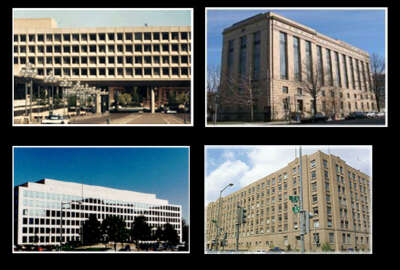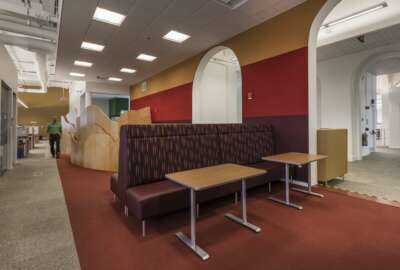
House panel questions inconsistencies in GSA’s leasing authority, purchasing options
Lawmakers and agency heads are looking at ways the General Services Administration can better manage and maintain federal properties and offices.
The General Services Administration is the federal government’s landlord, and part of its responsibility is ensuring that it is getting the best facilities for agencies to fulfill their mission, and giving taxpayers the best bang for their buck.
During a June 6 House Subcommittee on Economic Development, Public Buildings and Emergency Management hearing, members and representatives from GSA and the Government Accountability Office examined current independent leasing practices and how purchasing options can help lower price tags on offices and facilities.
“Some idiot from [the Office of Management and Budget] in 1990 promulgated a rule which we’ve been bound by, which is restricting the government’s ability … we hear a lot about running the government like a business, well what business is going to go out, enter into a costly lease and deny itself the opportunity to purchase at the end of that lease at a discounted price, therefore perpetually forever locked into expensive leasing,” said Rep. Peter DeFazio (D-Ore.)
DeFazio asked whether purchase options drive up monthly rental costs, but Chris Wisner, assistant commissioner for leasing at the GSA’s Public Buildings Service, said each deal is different. Depending on the person you’re negotiating with, they may not want to consider a purchasing option, while others would trade free rent.
“Every deal is specific, but my experience is you can put purchase options on the table,” Wisner said.
DeFazio said the government used to more regularly acquire property and then build a structure on it to be the most cost effective when it comes to long-term needs. But then the lease-purchase option came along, which was not as cost effective.
“What happened in writing a rule to try to level the playing field, we actually put the lease-purchase off the table and Congress, in its infinite wisdom not having created capital budgets, doesn’t hardly ever allow the purchase of property and the building of a structure,” DeFazio said. “We’d rather be idiots and pay a premium and end up with nothing.”
David Wise, GAO’s director of physical infrastructure issues, said his office’s latest report examined more than 18,000 leases, and of those, only about 17 involved lease-purchases.
With that leveling of the playing field, Wise said to DeFazio, “we are left with what we have today, which is a great over-reliance on leasing, and as you framed it, much higher costs in the long run to the government.”
Independent leasing
GAO’s report also looked at independent leasing authority. In 2004 the Federal Real Property Council (FRPC) was established “to promote the efficient and economical use of federal government real property.” GSA also created the Federal Real Property Profile (FRPP) to manage a database of all real property under the executive branch.
But only agencies included in the FRPC are required to annually submit their property information, according to the GAO report.
GAO surveyed 103 civilian agencies for the report. Out of those 103 agencies, half of them said they had independent authority to lease property. Of those 52 agencies, half of them are not members of the council, and they “reported that they leased 243 offices and warehouses covering approximately 8.3 million rentable square feet of space and costing $303.4 million in annual rent,” as of October 2015.
Included in that list is:
- The Federal Deposit Insurance Corporation, which has 91 offices and warehouses, 1.9 million square feet of rentable space, and an annual rent of $47.2 million.
- The Smithsonian Institution which has 50 offices and warehouses, 1.5 million square feet of rentable space, and an annual rent of $52 million.
- The U.S. Postal Service which has 35 offices and warehouses, 700,000 square feet of rentable space, and an annual rent of $11.9 million.
GAO also looked at the rates of 37 of these independent leases and found that 14 were less than those that matched the GSA’s rates. The other half split between being comparable or more than matched GSA leases.
Auditors said the reasons for those lower rates could be:
- GSA uses standardized lease documents that include clauses that can be more rigorous than the leases provided by private sector landlords.
- Tenant improvement allowances directly increased lease costs in about 64 percent of the matched GSA leases.
- The independent leases had periods of free rent built into the leases more frequently than the matched GSA leases.
- The use of private sector real estate brokers may have contributed to lower leasing rates because the brokers use the lowest offer as leverage to negotiate lower rates with other potential landlords.
Asked by Rep. André Carson (D-Ind.) about whether agencies that are responsible for procuring their own space acquire more square footage than what GSA would procure, Wise said that in the review “we found that in most cases — in almost all actually — the independent leasing entities ended up acquiring almost twice the recommended 150 square feet per employee that GSA now recommends.”
Giving preference
In May the House passed two bills aimed at reducing the government office footprint.
One bill establishes a Public Buildings Reform Board to analyze real property inventory and make recommendations for sales. The other creates a Streamlined Leasing Pilot Program within the GSA to make the process more efficient.
Within the Consolidated Appropriations Act of 2016 passed late last year, the GSA is set to get $75 million for consolidation activities, and “preference is given to consolidation projects that achieve a utilization rate of 130 usable square feet or less per person for office space.”
Copyright © 2025 Federal News Network. All rights reserved. This website is not intended for users located within the European Economic Area.
Related Stories





